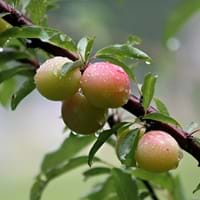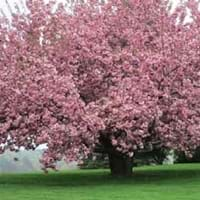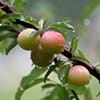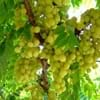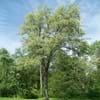Life Span
Perennial
Annual and Perennial
Type
Tree
Flowering Plants, Fruit, Tree
Origin
Northeastern United States, Mid-Atlantic United States, Southeastern United States, Central United States, Northwestern United States, Southwestern United States, Texas, Canada
Hybrid origin
Types
Not Available
Not Available
Number of Varieties
Not Available
Habitat
fencerows, Thickets, Upland savannas, Woodlands
Bushlands, gardens, Homesteads, In desert grasslands, Lowland, Shady Edge, Tropical areas
USDA Hardiness Zone
3-8
5-8
AHS Heat Zone
8-1
Not Available
Sunset Zone
1a, 1b, 2a, 2b, 3a, 3b, 10
Not Available
Habit
Oval or Rounded
Oval or Rounded
Flower Color
White
White, Pink
Flower Color Modifier
Bicolor
Bicolor
Fruit Color
Yellow, Red
Not Available
Leaf Color in Spring
Green, Dark Green
Green
Leaf Color in Summer
Green, Dark Green
Dark Green
Leaf Color in Fall
Green, Yellow green
Not Available
Leaf Color in Winter
Not Available
Not Available
Plant Season
Spring, Summer
Spring, Fall
Sunlight
Full Sun, Partial Sun
Not Available
Type of Soil
Clay, Loam, Sand
Clay, Loam
The pH of Soil
Acidic, Neutral, Alkaline
Acidic, Neutral, Alkaline
Soil Drainage
Average
Average
Bloom Time
Early Spring, Spring, Late Winter
Summer, Late Summer, Early Fall
Tolerances
Cold climate
Not Available
Where to Plant?
Ground
Ground
How to Plant?
Seedlings, Stem Cutting
Seedlings, Stem Cutting
Plant Maintenance
Medium
Medium
Watering Requirements
Keep the ground moist but not water-logged, Needs watering once a week
Keep the ground moist but not water-logged, Requires watering in the growing season
In Summer
Lots of watering
Lots of watering
In Spring
Moderate
Moderate
In Winter
Average Water
Average Water
Soil pH
Acidic, Neutral, Alkaline
Acidic, Neutral, Alkaline
Soil Type
Clay, Loam, Sand
Clay, Loam
Soil Drainage Capacity
Average
Average
Sun Exposure
Full Sun, Partial Sun
Full Sun, Partial Sun
Pruning
Prune in the late winter or spring, Remove damaged leaves, Remove dead branches, Remove dead leaves
Prune prior to new growth, Remove deadheads, Shape and thin as needed
Fertilizers
All-Purpose Liquid Fertilizer
Organic Manure
Pests and Diseases
bees, Borers, Red blotch
Aphids, Mealy bugs, Mites
Plant Tolerance
Drought
Not Available
Flower Petal Number
Single
Semi-Double
Foliage Texture
Medium
Medium
Foliage Sheen
Matte
Matte
Attracts
Bees, Birds, Deers
Not Available
Allergy
Mild Allergen
no allergic reactions
Aesthetic Uses
Beautification, Landscape Designing, Showy Purposes
Ornamental use, Showy Purposes
Beauty Benefits
Not Available
Not Available
Environmental Uses
Air purification
Air purification
Medicinal Uses
Antioxidants, High cholestrol, Iron, Nutrients
No Medicinal Use
Part of Plant Used
Fruits
Flowers, Fruits
Other Uses
Food for animals, Used as a nutritious food item, Used as Ornamental plant, Used for its medicinal properties
Culinary use, Showy Purposes, Used as Ornamental plant
Used As Indoor Plant
No
No
Used As Outdoor Plant
Yes
Yes
Garden Design
Edible, Fruit / Fruit Tree, Screening / Wind Break, Topiary / Bonsai / Espalier, Wildflower
Feature Plant, Shade Trees, Street Trees
Botanical Name
PRUNUS americana
PRUNUS 'Hally Jolivette'
Common Name
Wild Plum
Flowering Cherry, Hally Jolivette Flowering Cherry
In German
wild Plum
Blühende Kirsch
In French
wild Plum
cerisier
In Spanish
ciruelo silvestre
floración de la cereza
In Greek
Κορόμηλο
Άνθιση κερασιών
In Portuguese
Wild Plum
cereja de florescência
In Polish
dzikiej śliwy
Kwitnienie wiśni
In Latin
Wild Plum
florentem cerasis
Phylum
Magnoliophyta
Tracheophyta
Class
Magnoliopsida
Magnoliopsida
Clade
Angiosperms, Eudicots, Rosids
Angiosperms, Eudicots, Rosids
Tribe
Not Available
Not Available
Subfamily
Amygdaloideae
Amygdaloideae
Season and Care of Wild Plum and Flowering Cherry
Season and care of Wild Plum and Flowering Cherry is important to know. While considering everything about Wild Plum and Flowering Cherry Care, growing season is an essential factor. Wild Plum season is Spring and Summer and Flowering Cherry season is Spring and Summer. The type of soil for Wild Plum is Clay, Loam, Sand and for Flowering Cherry is Clay, Loam while the PH of soil for Wild Plum is Acidic, Neutral, Alkaline and for Flowering Cherry is Acidic, Neutral, Alkaline.
Wild Plum and Flowering Cherry Physical Information
Wild Plum and Flowering Cherry physical information is very important for comparison. Wild Plum height is 240.00 cm and width 240.00 cm whereas Flowering Cherry height is 180.00 cm and width 240.00 cm. The color specification of Wild Plum and Flowering Cherry are as follows:
Wild Plum flower color: White
Wild Plum leaf color: Green and Dark Green
Flowering Cherry flower color: White and Pink
- Flowering Cherry leaf color: Green
Care of Wild Plum and Flowering Cherry
Care of Wild Plum and Flowering Cherry include pruning, fertilizers, watering etc. Wild Plum pruning is done Prune in the late winter or spring, Remove damaged leaves, Remove dead branches and Remove dead leaves and Flowering Cherry pruning is done Prune prior to new growth, Remove deadheads and Shape and thin as needed. In summer Wild Plum needs Lots of watering and in winter, it needs Average Water. Whereas, in summer Flowering Cherry needs Lots of watering and in winter, it needs Average Water.
